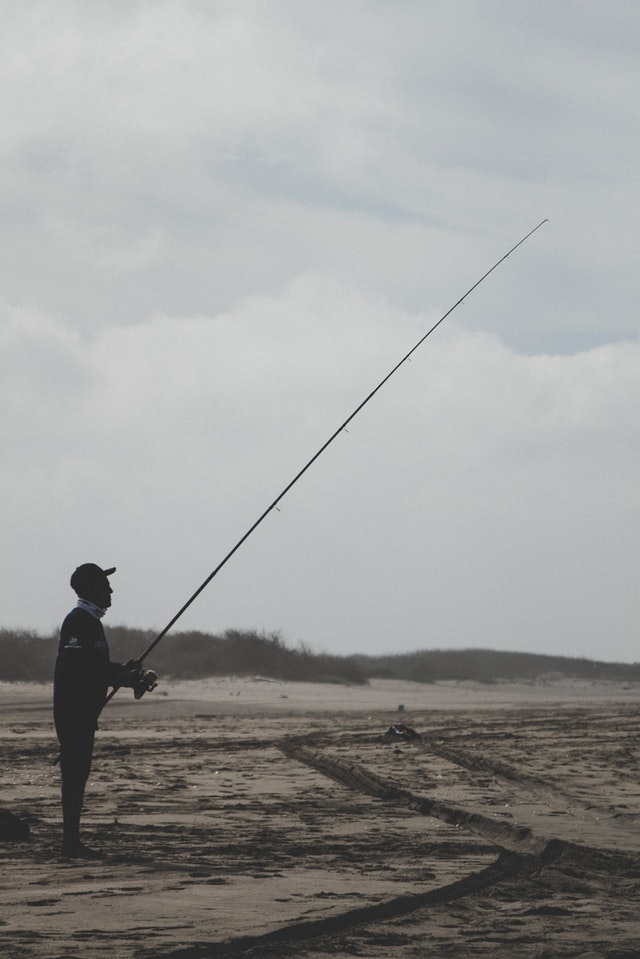What Fish Eat and When
What Fish Eat and When
In
this article, Mike has highlighted some striking italics that could be
particularly useful for choosing when and where to use a specific lure.
What
fish eat
 To
return to the subject of food, it is interesting to take a look at the annual
cycles of the most vital lure and try to put it in place when it is intended to
be accessible to the fish that eat it.
To
return to the subject of food, it is interesting to take a look at the annual
cycles of the most vital lure and try to put it in place when it is intended to
be accessible to the fish that eat it.
From
the beginning, there is the rug worm. These large worms are generally used as
decoys, probably in light of the fact that they constitute a decent trap,
loaded with material that is satisfactory for a wide range of fish. In
addition, they are just as easy to discover and dig from shores of sand and
slippery sand. The caterpillars are found both on the coast and in protected
creeks; the supposed dark trail, chasms, etc., are assortments of similar
species and vary according to the surrounding conditions.
 A
fundamentally identical species, the tail-tail worm, is found on stony or
gravelly soil. The fish that feed on these worms are thus familiar with the
discovery of one or more groups of animals in most inter tidal areas. They are
just below the level of the tide and live in more or less vertical tunnels up to
one meter inside and outside. The many subtleties of their way of life are
obscure.
A
fundamentally identical species, the tail-tail worm, is found on stony or
gravelly soil. The fish that feed on these worms are thus familiar with the
discovery of one or more groups of animals in most inter tidal areas. They are
just below the level of the tide and live in more or less vertical tunnels up to
one meter inside and outside. The many subtleties of their way of life are
obscure.
The
base head worm, whose small sand spirals are such an important component of our
shorelines, is usually secured in the U-shaped reinforcement tunnel, where it
ciphers water through the small channel of sand, which gives him his
sustenance. At intermediate intervals, the paw wanders back to the surface to
add to its casting. Nobody, exceptionally, only one member of the body of the
worm can leave his tunnel and then only the non-essential end of his
"tail".
The
caterpillars leave their tunnels and appear to be particularly helpless against
the fish twice a year. In particular, many worms can reach the peak at the
moment of their appearance. The lug-worm releases eggs and sperm from inside the
tunnel between spring tides at the end of October.
In
addition, worms of the plague move by a type of swimming, which happens from
time to time unrelated to the birth. Swimming worms were seen in May, while
exposed shorelines could be rapidly decolonized. It seems likely that fish are
particularly drawn into rug worm beds, both under and between brands, in May
and October-November. On these occasions, they can even be modeled or captured
to benefit from these worms.
The
worm Lord cloth, another huge trap and a lure spilled. The most striking
element of these verses is the jaw that flies off and squeezes the fisherman's
finger as he pulls it. They are not, as one might suppose. The cloth of the
ruler lives on mudflats, often near and under expansive stones. A number of
different types of worms are used to draw, including the small red worm, which
lives on the higher dimensions of the shoreline. These red worms are in all
cases the most abundant, where the fresh water continues to flow or penetrates
through the silt.
Rag worms
are dug for use and can be purchased as spines. The degree to which trap
diggers release large worms on dark incense can be as high as 70-85%. It takes
about a month for an uncovered patch to repopulate surrounding areas. Ruler
production takes place in May and huge numbers of small worms appear on the
pads in July and August, whether they have developed and created on the
shoreline or moved under tide. The worms at this moment live and grow in the
mud for a few years.
Female
worms remain in their tortuous tunnels to be born, shedding their eggs in the
overlying waters. Conversely, male worms turn to dark green, develop huge
swimming oars at the time of delivery and discharge their sperm while swarming
in the water above the tunnels. In summer, they will be quickly consumed and
eaten by fish. Male worms swim curiously with the front part of the body.
Firmly held and wriggling back, a bit like some of the advanced and delicate
plastic baits, intended for "sand eels". Some fishermen will not use
green-leaved leaf-worms as traps because they are thought to be unattractive.










No comments
Help Us to improve our web by comments and suggestions.